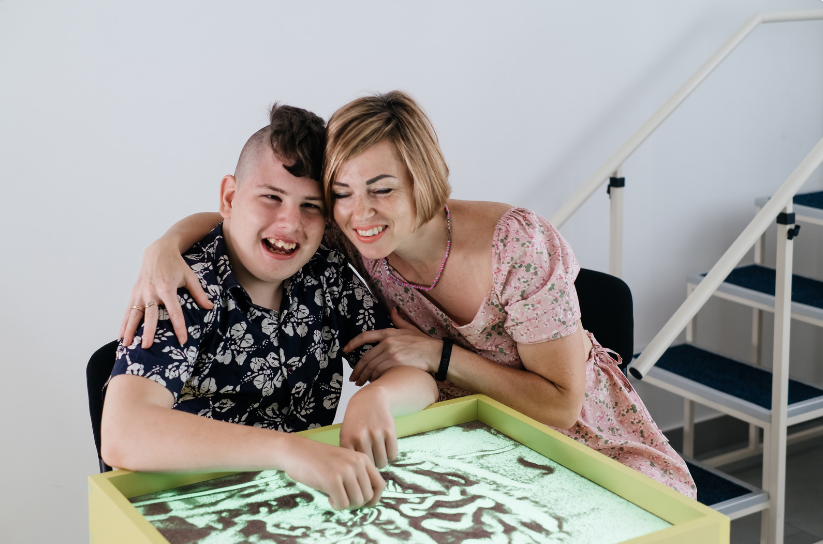Sensory play provides many benefits to children, including stimulating a child’s senses to build connections in the brain and creating rich, dynamic learning opportunities.
A multi-sensory approach to therapy encourages problem-solving, creativity, cognitive development, and language development. Fresh out of maternity leave and swept back into the therapy world, a new student transferred, and I honestly did not know where to begin. Diagnosed with Autism Spectrum Disorder and hard-of-hearing, in addition to having limited verbalizations and signs, I knew I needed to get creative. She was also bilingual, and her parents did not speak English.
Where did I start? I initiated therapy by playing on her interests and strengths. One of the few signs she knew was the sign for swimming. Utilizing a translator during her initial IEP meeting, I asked her parents what her interests were. They indicated that she loved to swim and enjoyed hands-on activities. I just so happened to have a flamingo/swimming sensory bin at home that my daughter loved. I was able to sneak it out of my house and into her classroom! After just one session with her, she opened up to me. She felt validated, heard, and a true connection was fostered between us.
Sometimes it's about going back to the basics. Back to the core of human behavior and communication: connection. We have to start with a connection with a child if we are to make any strides in therapy. This child was very responsive during our therapy sessions, and I was able to introduce an AAC device to facilitate communication as well as expand on the signs she had in her repertoire.
I encourage you to find that common ground with each child, build on their strengths and interests, and most importantly, foster a true connection with them. That is where communication starts—at the most basic level of connecting with another human being. One does not even need spoken language to connect. Connection can occur through a smile, a hug, a shared experience, and during sensory play. Cultivating the connection with that student through sensory play activities proved worthwhile. Her motivation to participate and communicate increased, and before I knew it, other students wanted to join in as well!
When in doubt, choose connection first. Meet the child where they are and build upon that foundation of mutual connection and trust.
Author: Ashley Talley, M.S., CCC-SLP

